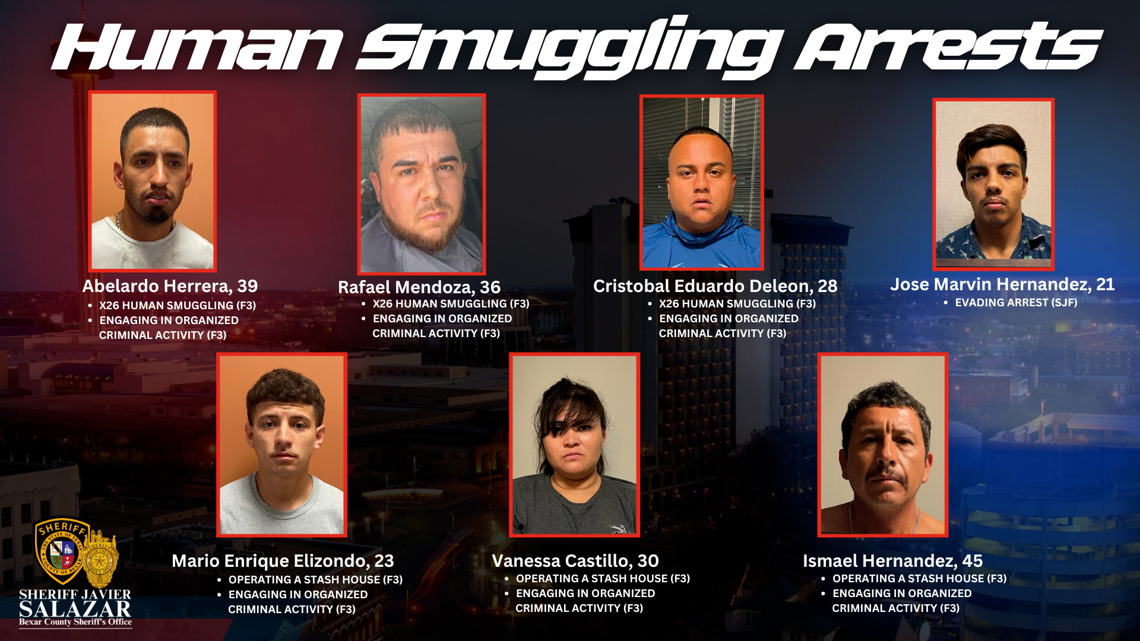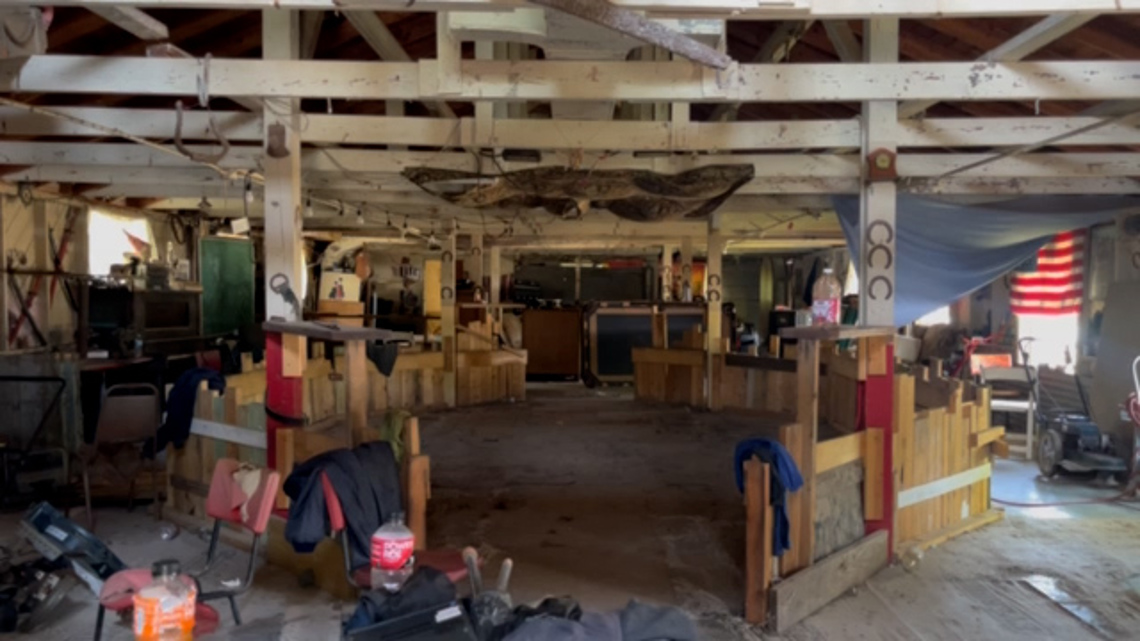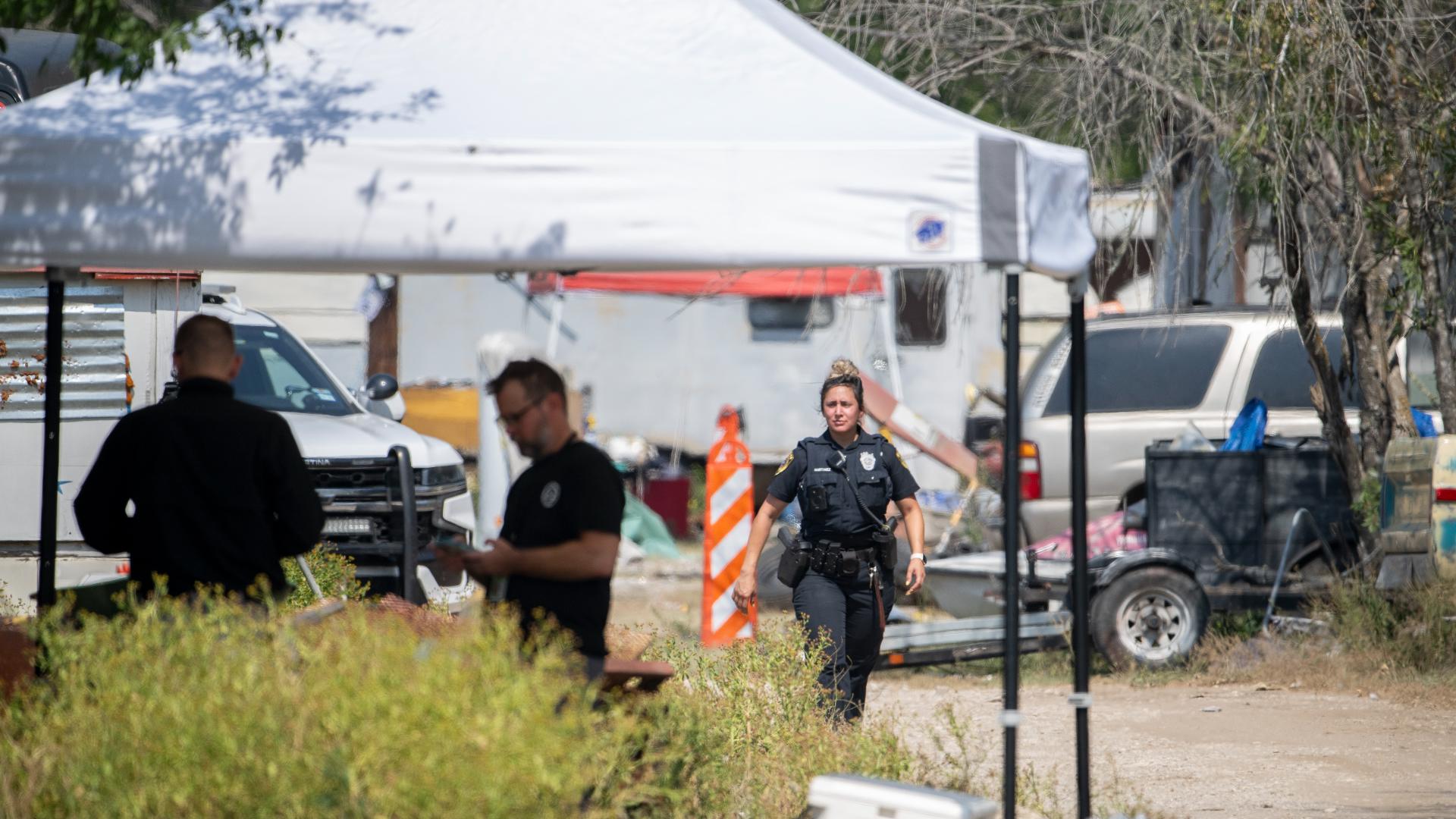BEXAR COUNTY, Texas — New video of a migrant stash house on the far south side gives a closer look at a chaotic situation in which 26 migrants had to be rescued from deplorable conditions.
Dozens of first responders worked to separate the healthy from the sick, as 12 migrants were sent to the hospital with heat-related illnesses and minor injuries. One remained in the hospital with dehydration and cardiac issues as of Friday late afternoon.
In a press conference Thursday, Bexar County Sheriff, Javier Salazar said the migrants were being held inside a shack off Oak Island Drive.
"The windows are open. There's no AC in there. There's no running water. They've got buckets that everyone's been using as toilets," said Salazar. "I didn't see any source of drinking water. It's miserable conditions and it's just blazing hot in there."
Before they arrived at the stash house, the 26 were confined to a secret compartment underneath a gooseneck trailer hauling two corrugated pipes for the three hour drive from the border. Holding them in place was a layer of hard mesh, just inches above the road.
Six men and one woman were arrested in connection to this smuggling operation.


KENS 5 is learning new insight on this case from a former special agent with Homeland Security. Under condition of anonymity, he shared his perspective on these big money operations.
"Smugglers make all kinds of promises that this is the land of milk and honey," he explained. "[Migrants] come in with a dream, and someone is exploiting them and that dream."
He said stash houses are more abundant than we realize. The majority are hidden in low-income areas.
"In ethnic areas where the people can blend in," he said. "The conditions are deplorable. They're underfed. They're constantly threatened and abused, but what's your choice? Once you're there, what are you gonna do? Go to law enforcement?"
Even if migrants want to run, nearby houses could be connected to the smuggling operation, too. While on the force, he recalls a migrant telling him, "I made a mistake. Had I known it was going to be like this, I would have never done this."
The reality is, migrants are seen as a commodity to smugglers, he said.
"You're bringing drugs in, you want to keep it there for just a short time and move it forward. It's the same thing with stash houses. You bring them in there temporarily, then let's move them forward to the ultimate destination," he said. "They don't want to sit on them a long time because that attracts attention."


"I remember it was this time of year, the smugglers put a 13-year-old boy in the trunk of the car. If it wasn't for the Seguin Police Department that stopped this car in a traffic stop, that young man would have died. He was dehydrated. But they don't care. The smugglers do not care. It's just a commodity to them. It's all it is."
When arriving at their final destination, migrants are often exploited for more money.
A migrant from Guatemala, who was among the rescued off Oak Island, said she paid $16,000 just to get to San Antonio.
"They're all coming over with a dream. That's all it is. Trying to make life a little bit better. Are there people there who are bad guys? Sure. Even the ones that come in legally, we've had bad actors there," he explained.
To him, Thursday's large number of migrants signals a well-established smuggling operation.
While the majority of stash houses remain low-key, he said there are clues that can point one out.
"High-capacity vehicles, vehicles that come at weird hours of the day. If you see people out there, you'll see people stay to themselves," he explained. "They appear and then they disappear. Then all of a sudden there's new people in the neighborhood."
Many won't report a possible smuggling ring due to fear of retaliation. The former special agent advises the public to say something whenever they see anything suspicious.
The 26 migrants, 20 men and 6 women, were from Mexico, Honduras, Venezuela and Guatemala. They ranged in age from 18 to 54.

